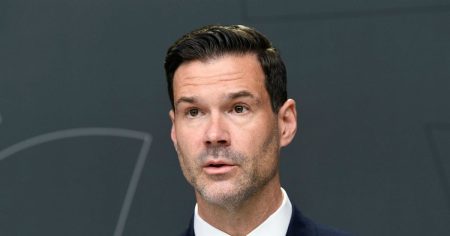The piercing wail of alarms filled the room, punctuated by the rhythmic flashing of overhead lights. A team huddled around a bed, their faces etched with concern as they frantically checked equipment and lines. The patient’s chest rose and fell with alarming rapidity. A nurse rushed to the doorway, calling for assistance. Despite the patient being a medical training mannequin, the tension in the room was palpable. This was an ECMO training session at the Karolinska University Hospital’s Clinical Training Center in Solna, Sweden, specifically designed for doctors and nurses from Ukraine’s largest children’s hospital, Okhmadyt, and the Children’s Cardiology Hospital in Kyiv.
The Ukrainian medical professionals, including Sasha Kaliuzhua, a pediatric anesthesiologist, and Zoya Morochenet, an intensive care nurse, were eager to master this life-saving technique. They had witnessed firsthand the devastating effects of the war, having been on duty when Okhmadyt was struck by a missile the previous summer. The training offered a respite from the constant stress and danger they faced back home, a glimpse into a world where everyday life felt safe and predictable. Lars Falk, head of the ECMO Center at Karolinska, explained that the course had been tailored to the specific needs of the Ukrainian team, focusing on treating critically ill children with heart or lung failure, including those with severe injuries. ECMO, Extracorporeal Membrane Oxygenation, represents the most advanced form of intensive care, utilized when conventional methods fail. The ECMO machine, a sophisticated heart-lung machine, oxygenates the blood externally via a membrane. For the Ukrainian doctors and nurses, the opportunity to train at one of the world’s leading ECMO centers was invaluable.
During a break, the Ukrainian team shared their harrowing experiences. Zoia Morochenet recounted the missile attack on their hospital, the rain of glass shards that fell upon anesthesiologist Alina Lyskokov and a young patient prepped for surgery. While miraculously no children perished in the attack, medical staff and a family member lost their lives. The team was forced to evacuate 400 patients amidst bursting water pipes and the threat of collapsing floors. The emotional scars of that day were evident as Zoia Morochenet fought back tears. They returned the next day to assess the damage, living in constant fear of another attack. The relentless barrage of missile attacks throughout the autumn and winter, coupled with frequent power outages, had taken a heavy toll on the medical staff and their ability to provide consistent care. Even moving critically ill patients to safety during air raids was not always feasible.
The young Ukrainian medical professionals acknowledged their limited ECMO experience, comparing their skill level to that of student drivers just beginning their lessons. Despite the challenges, they were determined to learn and bring this vital knowledge back to their war-torn country. The training scenario, though simulated, evoked the intense pressure they faced daily. The ECMO machine, a complex network of tubes and technology, became a symbol of hope in their struggle to provide the best possible care for their young patients.
The missile attack on Okhmadyt on July 8th sent shockwaves around the world, highlighting the vulnerability of hospitals even in times of war. Astrid Lindgren Children’s Hospital, which had a pre-existing partnership with Okhmadyt, quickly offered to receive patients in Stockholm. The focus then shifted to staff exchange and training, aiming to maintain a high level of care in Ukraine despite the ongoing conflict. Okhmadyt benefited from a fundraising campaign that generated 20 million, partly through the non-profit organization Beredskapslyftet and partly through contributions from the Swedish government. A Swedish company even donated an ECMO machine. At the Karolinska ECMO Center, this highly specialized method had been refined over decades, expanding significantly during the swine flu pandemic and again during the COVID-19 crisis.
The training course for the Ukrainian medical professionals resonated deeply with the Karolinska staff, many of whom volunteered their time and rearranged schedules to make it happen. While initially considering holding the training in Kyiv, logistical concerns and the desire to offer the Ukrainian team a reprieve from their stressful environment led to the decision to host it in Stockholm. Andrey Vysotskyi, head of the intensive care unit at Okhmadyt and a former trainee at the Karolinska ECMO Center, emphasized the importance of this training as the first step in building a wider ECMO capacity in Ukraine. This team, he explained, was the only one in the country with ECMO expertise for children, and their mission was to disseminate this knowledge to other hospitals. Beyond the technical skills acquired, the Ukrainian team also found solace in the simple normalcy of life in Stockholm, the festive lights offering a stark contrast to the darkness they faced back home. For them, this experience was not just about learning a life-saving technique; it was a reminder of the peace and stability they hoped to restore to their own country. The brightly lit streets of Stockholm in the weeks leading up to Christmas provided a beacon of hope, a glimpse into a future they were determined to build for the children of Ukraine.














